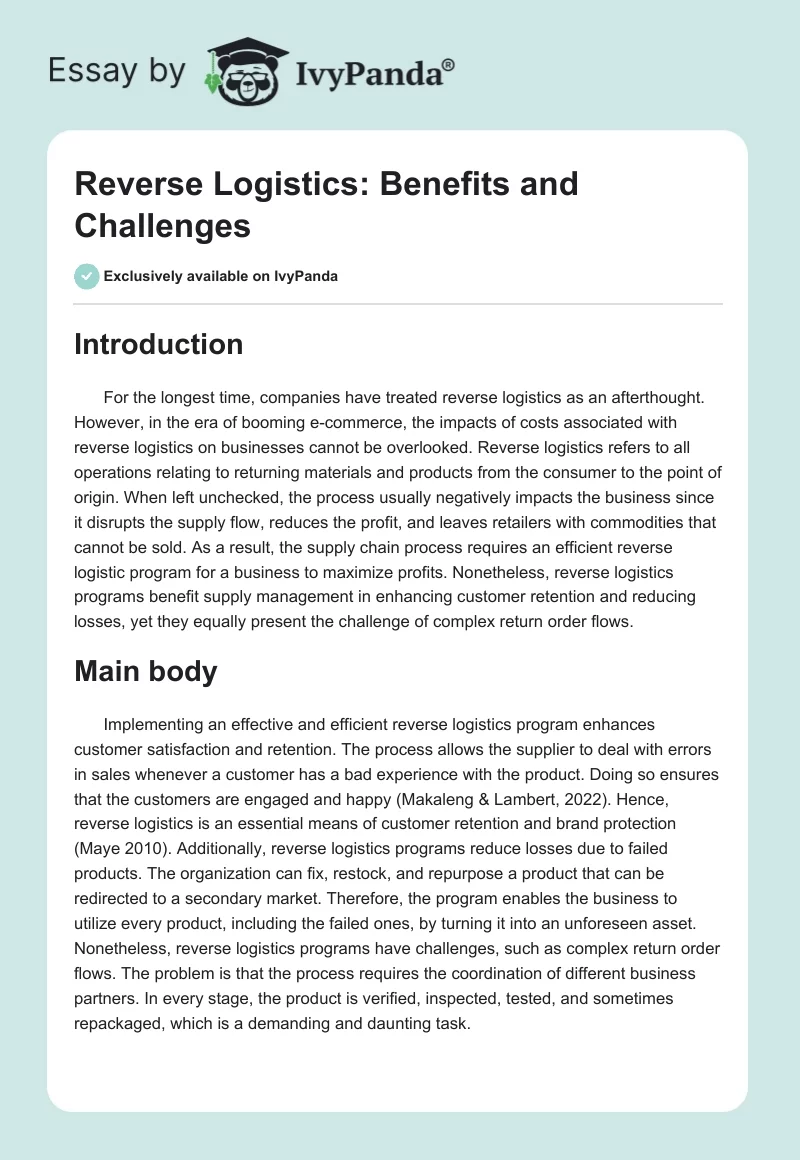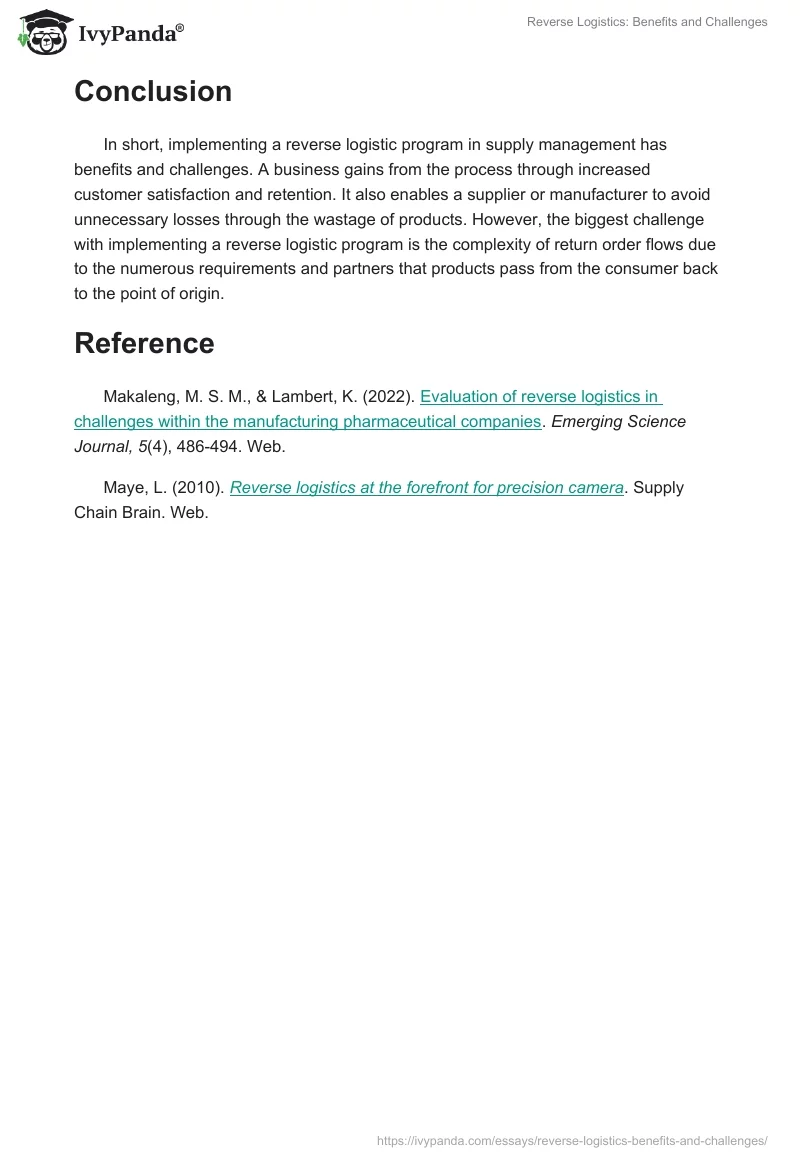Introduction
For the longest time, companies have treated reverse logistics as an afterthought. However, in the era of booming e-commerce, the impacts of costs associated with reverse logistics on businesses cannot be overlooked. Reverse logistics refers to all operations relating to returning materials and products from the consumer to the point of origin. When left unchecked, the process usually negatively impacts the business since it disrupts the supply flow, reduces the profit, and leaves retailers with commodities that cannot be sold. As a result, the supply chain process requires an efficient reverse logistic program for a business to maximize profits. Nonetheless, reverse logistics programs benefit supply management in enhancing customer retention and reducing losses, yet they equally present the challenge of complex return order flows.
Main body
Implementing an effective and efficient reverse logistics program enhances customer satisfaction and retention. The process allows the supplier to deal with errors in sales whenever a customer has a bad experience with the product. Doing so ensures that the customers are engaged and happy (Makaleng & Lambert, 2022). Hence, reverse logistics is an essential means of customer retention and brand protection (Maye 2010). Additionally, reverse logistics programs reduce losses due to failed products. The organization can fix, restock, and repurpose a product that can be redirected to a secondary market. Therefore, the program enables the business to utilize every product, including the failed ones, by turning it into an unforeseen asset. Nonetheless, reverse logistics programs have challenges, such as complex return order flows. The problem is that the process requires the coordination of different business partners. In every stage, the product is verified, inspected, tested, and sometimes repackaged, which is a demanding and daunting task.
Conclusion
In short, implementing a reverse logistic program in supply management has benefits and challenges. A business gains from the process through increased customer satisfaction and retention. It also enables a supplier or manufacturer to avoid unnecessary losses through the wastage of products. However, the biggest challenge with implementing a reverse logistic program is the complexity of return order flows due to the numerous requirements and partners that products pass from the consumer back to the point of origin.
Reference
Makaleng, M. S. M., & Lambert, K. (2022). Evaluation of reverse logistics in challenges within the manufacturing pharmaceutical companies. Emerging Science Journal, 5(4), 486-494. Web.
Maye, L. (2010). Reverse logistics at the forefront for precision camera. Supply Chain Brain. Web.


